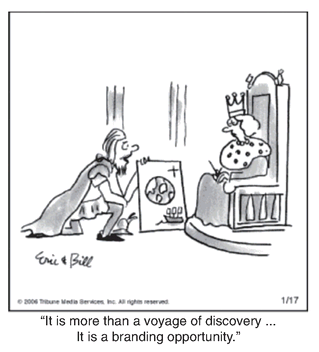1
Private Equity as an Economic Driver: An Historical Perspective
Christopher Columbus convinced, after seven years of lobbying, the Spanish Kings (Ferdinand II of Aragon and Isabella I of Castile) to sponsor his trip towards the West. His ‘elevator pitch’ must have been the following: ‘I want to open a new and shorter nautical route to the Indies in the West, defy the elements, make you become even more powerful and rich, and laugh at the Portuguese and their blocs on the Eastern routes’ (see Cartoon 1.1).
Cartoon 1.1 A modern view of Columbus’s pitch to the Spanish Kings
Bottomliners © Eric & Bill Teitelbaum. All rights reserved.

He probably did not know by then that he was structuring a private equity deal (here, a venture capital operation). He was indeed, as his project combined these elements: financed by an external investor, a high risk, a high return potential and protection of this competitive advantage.
These elements form the common ground for all private equity deals (venture capital, development capital, leveraged buy-out, etc.). Another element lies in the ‘private’ characteristics of private equity deals negotiated privately between the parties: historically, they were made with non-listed companies.
Even though it is difficult to imagine whether, and how, Columbus did his risk/return calculation when assessing the viability of his project, we can assume that the ...
Get Introduction to Private Equity now with the O’Reilly learning platform.
O’Reilly members experience books, live events, courses curated by job role, and more from O’Reilly and nearly 200 top publishers.

